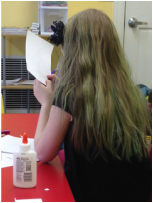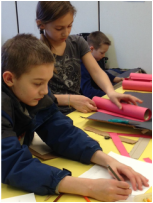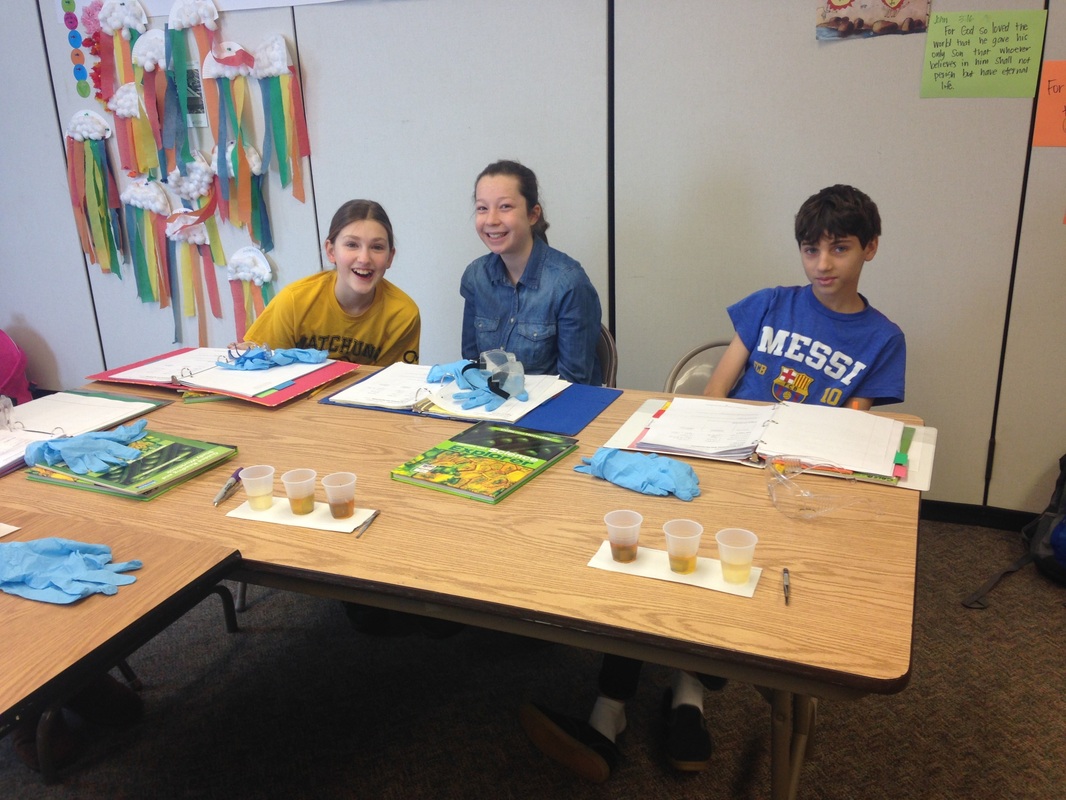|
with Angela Harris Warming up with Willa Willa Cather Willa Cather After our three-minute free-write in our journals (we start every class this way; it gets us warmed up and underscores a topic or theme found in the novel we are reading/discussing at the moment), we heard about the life and experiences of our current author, Willa Cather, and the model for possibly her most famous heroine, Ántonia Shimerda. Willa Cather did not want her novels to be read as veiled autobiography, but My Ántonia parallels many of her life’s experiences. Many literary scholars argue that Jim Burden is Willa Cather. For example, Jim and Cather both left Virginia as young children and lived on the Nebraska prairie. Cather’s family then moved to Red Cloud a year later; Jim’s family moves to the fictional town, Black Hawk. Cather gave her high school graduation speech, as does Jim; then they both studied at the University of Nebraska in Lincoln. After graduation, they leave Nebraska for the east: Jim to study law at Harvard; Cather to work as editor at Home Monthly in Pittsburgh. I love this quote from Cather: Art must spring out of the very stuff that life is made of. The German housewife who sets before her family on Thanksgiving day a perfectly roasted goose, is an artist. The farmer who goes out in the morning to harness his team, and pauses to admire the sunrise—he is an artist. What do you think this means? How can a housewife be an artist if she hasn't painted anything? How is a farmer an artist if he's simply admiring the sunset? Please think about this and we'll talk about its meaning next week. Cather was an author who was captivated by the simplicity of prairie life and expressed her thoughts in words that truly approach poetry. Cather quotes are absolutely life affirming. H.L. Mencken said, “No romantic novel ever written in America, by man or woman, is one half so beautiful as MY ANTONIA.” As you read, notice places in the novel that are written in such a way as to conjure up a particular image. Re-read these parts to understand them better. Roll the images about in your mind. Taking the time to enjoy the novel in this way is not only far more engaging but (hint) will help you with another essay coming up in a few weeks! Paraphrasing ExerciseIn preparation for our expository essay writing assignment this week, we took some time to understand what makes a good paraphrase. Each student had selected a piece of research that they had identified last week as being valuable in providing points and particulars for their five-paragraph essay on the topic of immigration. We read our articles with a view to choosing a point that we could put into our own words. We wanted to look for a point, not just a comment. A comment not worth paraphrasing will not have a specific fact or unique idea to contribute. Look for facts, data, statistics, or conclusions built on those things. Expert opinion also qualifies. (Be sure to include their qualifications: see Citing Sources below). Paraphrasing means taking ideas and putting them into your own words and sentence structure. The length and style of the sentence should be maintained, but the language and structure should be different. We then chose the quote or piece of information that we wanted to practice paraphrasing and wrote it out exactly as it appeared. Then, on a separate sheet, we wrote out our own version WITHOUT looking at the original. We shared the original and then our paraphrase. These usually need more than one attempt. After the first attempt, you can go ahead and look at the original quote and try a second draft. I actually think all the students did pretty well on their first draft--we didn't have time for a second attempt, but I think they get the general idea! I wanted to practice summarizing as well, but that will have to wait for another day and time. Important: Citing SourcesAt the end of class we went over a guide to expository essay writing that I put together for the students. Please read the sample essay one time all the way through just to get the meaning. The second time compare the essay to the guide to see how this particular student followed the steps to complete the essay. Do not attempt to write an expository essay without reading one first. Would you attempt to write out instructions on how to ride a bike without knowing how to ride one yourself? Writing an expository essay without ever having read one is just as silly!
Once we become more comfortable with essay writing (e.g., next year) we can relax the formulaic approach. For now, follow the steps and you'll have success! You will need this information to cite sources correctly for this essay: Researchers place brief parenthetical descriptions to acknowledge which parts of their paper reference particular sources. Generally, you want to provide the last name of the author and page number if it’s from a book. If it's from the Internet, you will just put the author's name in parenthesis after the quote or bit that you are paraphrasing or summarizing. PLEASE UNDERSTAND, EVEN IF YOU ARE NOT USING A DIRECT QUOTE YOU MUST GIVE CREDIT. If such information is already given in the body of your sentence, then you don't need a parenthetical citation. Ideally, when citing on-line sources, try to reference the source within your sentence, with either the author or the title to avoid writing a parenthetical citation. Otherwise, place the parenthetical citation where there is a pause in the sentence – normally before the end of a sentence or a comma. If there is no author, use the title that begins the citation, either the article or website title. Be sure it also takes the same formatting as non on-line sources, i.e. articles are in quotes and website titles are italicized. Next session we will learn how to include a "Works Cited" at the end of your paper (the bibliography). Example of information taken from the Internet and you know the author's name: The economy will rebound with the new monetary policies (Smith). Example when you do not know the author's name, but you know the title of the article OR name of web-site: Elephants are thought to be one of the smartest mammals (“Smart Elephants”). This came from an article--use quotes so I know it was an article. Most importantly, if this is not clear, please ask. Citing sources is required for this paper--either within the sentence itself (preferred for on-line sources) or in-line parenthetically as described above. Good luck and see you next week! MonologuesStudents identified the theme and mood of each piece, looked at the use of figurative language, and discussed the motivation and circumstance of each narrator/character. We are slowly uncovering the interesting variety of personalities that comprise the young medieval voices of our village. As you read through the monologues each week, you should be thinking about which characters and scenes you would like to perform. I have asked that everyone provide me with their first, second, and third choice no later than March 30th. Set Design
Students broke into small groups to brainstorm ideas for designing and building these components. We will continue work on set design concepts next week, so come prepared to present and discuss your ideas! HomeworkTo prepare for next week:
with Kim Rodgers When Molecules Meet! This week in Chemistry we learned what happens when molecules meet. Sometimes there is a reaction where something changes in the way the atoms are hooked together. The molecules might switch atoms and go from one type of molecule to another. Sometimes when molecules meet they join together to form a new molecule. And sometimes molecules might break apart to form entirely new molecules. In all of these situations atoms are neither created or destroyed. They will never appear or disappear. We learned some examples of chemical reactions we might see regularly in our lives, in our world, or even in our own bodies! But just like atoms, reactions follow rules. Our experiment focused on 4 cups of mystery fluids. We wrote down observations about each fluid before beginning to use our senses. We even used taste because we knew the liquids were safe, but we discussed how scientists would never taste something if they didn't know what it was. At first the students wrote down one, maybe two words. But before we shared I had them go through their senses, writing at least one word for each sense that could perceive something. We decided hearing wasn’t a very helpful sense in our circumstances. We shared our observations about each one and came to the conclusion that we were dealing with cups of lemon juice, vinegar, milk, and water mixed with baking soda. We moved on to mixing. We took each possible combination of two cups. Before mixing them, the students wrote down their hypothesis of what they thought would happen. Some combinations showed no reaction, like lemon juice and vinegar or milk and baking soda. Some reactions showed a little change like lemon juice and milk or vinegar and milk. Both lemon juice and vinegar caused the milk to curdle. And some reactions were VERY obvious, with bubbles overflowing the cups and making us jump! These combos were lemon juice and baking soda, as well as vinegar and baking soda. Vinegar and lemon juice have similar molecules, which is why there isn’t a reaction when they combine. Knowing that, the students could guess which liquids had similar molecules and which had very different molecules. The students have all of their observations in their notebook, which they can use to write up their Chemistry notebooking page this week to share in class next week. The Language of Castles In Middle Ages we learned about the English language. That might sound silly, but it was very interesting to learn how many languages we borrowed words from to form what we use today. We saw examples of Old English, which we could barely pronounce let alone try to understand! Some words we have now from Old English are man, house, sheep, dog, wood, field, work, drink, laughter, the, this, here, and that. When the Anglo-Saxons came they drove away the Celts into Ireland, Scotland, and Wales and their language went with them. English didn’t borrow many words from them because Angles and Saxons spent very little time talking to the Celts! English borrowed many words from Latin and Greek when Augustine brought Christianity with him. Words like apostle, pope, angel, and baptize were adopted into the English language from Greek. Latin words English took were minister, nun, monk, gospel, and sanctified. Then the Viking invasion occurred when English adopted some of their short, plain, simple words like leg, skin, skull, angry, cut, crawl, die, and drown. Most of the days of the week are even named after Viking gods. And when William the Conqueror settled in England he brought with him many of his noblemen, which caused many French words to be added in like peace, curtsy, beef, chair, curtain, garden, castle, and rich.
We also learned about feudalism, which came about when William decided that the king was more than a war leader. He thought the king should own all the land that he ruled. William gave his favored knights pieces of England for their own, while the knights promised to fight for William if ever he needed them. The knights came to be called lords and they gave smaller parts of their land to other knights who would fight for them, and to English farmers, called peasants or serfs. In exchange they would give part of whatever they raised or grew to their lord. Every person served someone, and that person gave something in exchange. The lifestyles of a serf and a lord were explained. Some students decided they would like the life of a serf because they worked outside with animals or land and didn’t have the threat of having to join in battle, while others liked the idea of living in a castle with good food and entertainment even though they might have to battle at a moment’s notice. From there we moved on to create our own castles. They could choose if they wanted to build one I had copied on cardstock, one they could create on their own from boxes and tubes, or work in a group on one that Finn had brought in that was about 3 feet tall (thanks Finn!). The class split in half. One half did the cardstock version, while the other half wanted to create their own. This project will need to carry over to next week as their creative juices are flowing! I’m considering having a class of finishing up projects next week as we have our embroidering to finish as well. Students have their mapping page and notebooking for next week. See you then! with Leigh Ann Yoder Diffusion DiscussionAt the beginning of class we immediately began our lab on Cell Membranes and Permeability. We began by observing a model cell I had set up 24 hours prior to our class. The cell membrane was represented by a sandwich bag, the interior of the cell was filled with a starch solution and the outer environment was iodine. Students first observed the chemical reaction that takes place when iodine mixes with starch. Then we examined our model cell together. We observed and discussed that the cell membrane was selectively permeable, allowing iodine to pass into the cell, but did not allow the starch to pass out. This was determined to be due to the membrane pore size. Students successfully identified that our model cell represented passive diffusion. Students next set up Part II of our lab which tested the effects of concentration on diffusion. They soaked potato cubes in three different concentrations of iodine. After 30 minutes, students measured the distance of diffusion in the three potato cubes and were able to draw the conclusion that the greater the concentration of iodine, the greater the distance of diffusion. Students then applied their knowledge and were able to determine why sick people wear oxygen masks. Please ask your student to explain this. While our potatoes were soaking we had time to discuss the results of our Egg-speriment as well as review key concepts covered in our weekly learning. We specifically focused on diffusion, osmosis, and active and passive transport. Notes: Please bring goggles and cleaned jars next week. Also, if you have not already paid your supply fee please bring next week. Thank you. HomeworkMandatory:
Read 2.1 and 2.2 (Photosynthesis and Respiration) Complete the study guide for both 2.1 and 2.2 Optional: Take Chapter 1 Test and bring for grading (highly recommended) Online Activities pg. 46 and 52 |
Categories
All
Archives
May 2016
|














 RSS Feed
RSS Feed